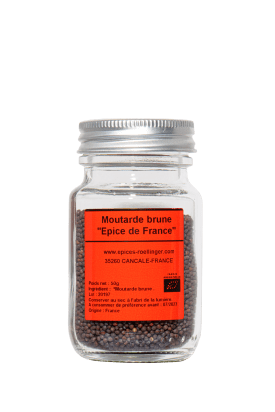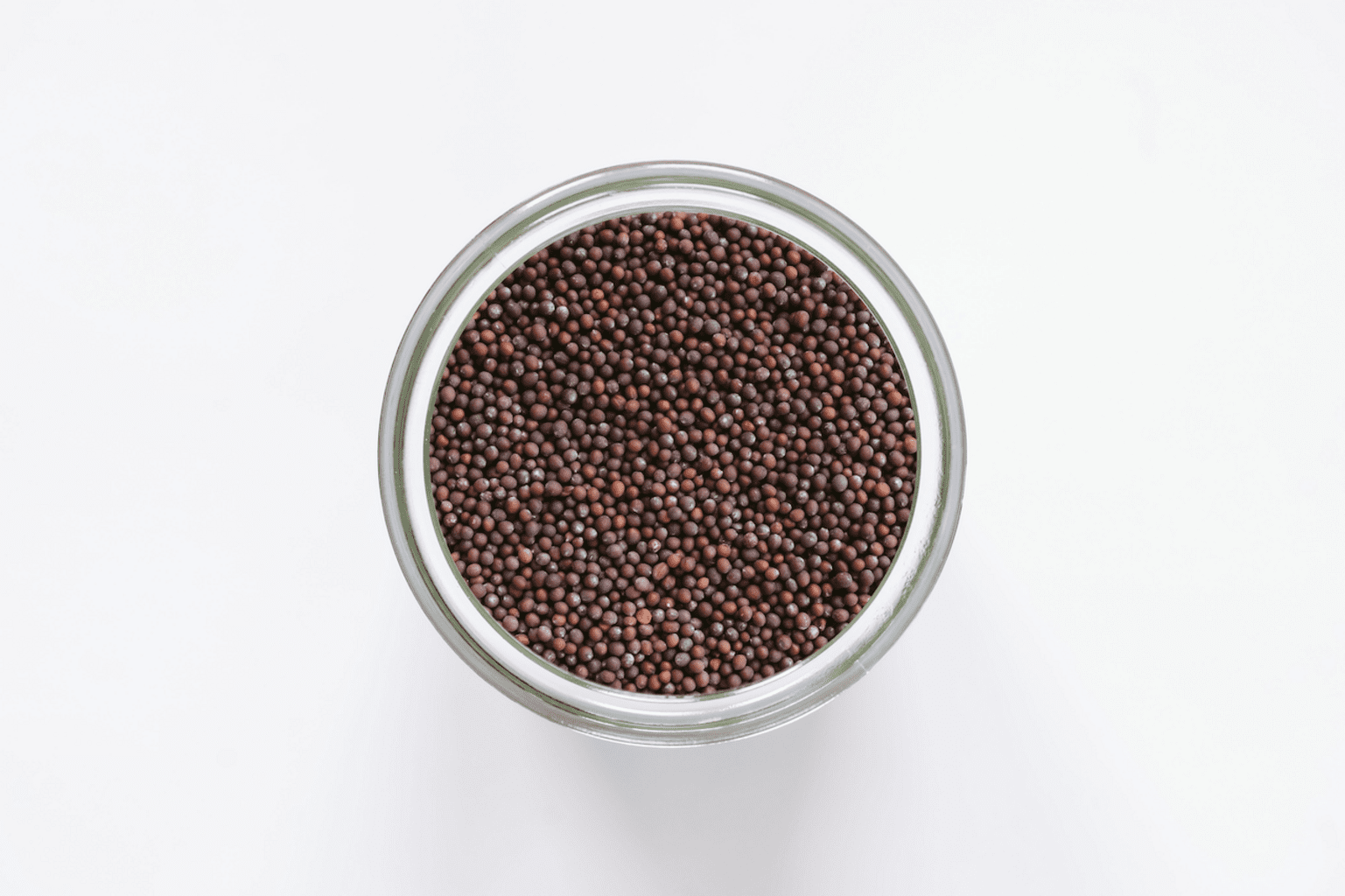Brown Mustard seeds

This product is temporarily unavailable. Receive an email as soon as this product is available again:
Recommendations
-
Allergens
*Mustard
May contain traces of sesame, celery, soy. - Origin France
- Storage / Use In a cool, dark, dry place.
Olivier Rœllinger's words
Dry-toasting brown mustard seeds in a skillet releases their aromas and lends them a flavor that’s similar to puffed rice with a touch of bitterness.
One thing to remember in the kitchen is that mustard can act as a thickener for a sauce that’s too thin. Simply stir a tablespoon of mustard seeds into a little of the warm (not hot) sauce then return it to the pot. Gently reheat the sauce and cook it until it thickens without boiling it and whisking constantly the way you would thicken a custard.
Story
Brown mustard (Brassica juncea) generally comes from India, but we have chosen to source ours from a certified organic farming cooperative in Occitanie (France) that uses agroecological methods.
The word ‘mustard’ comes from ‘mustum ardens’ a Latin expression that means burning must. (Must is the term for the pulp and skins of crushed grapes.) In ancient times, mustard had medical as well as culinary uses. It was a well-known revellent remedy used to draw blood to an area and ease pain. It was also enjoyed as a flavorful seasoning for foods. By the Middle Ages, mustard was an integral ingredient in salted meat preparations. Dijon and whole-grain mustard are made with brown mustard seeds. White mustard seeds are used to make German, American, and English mustards.
